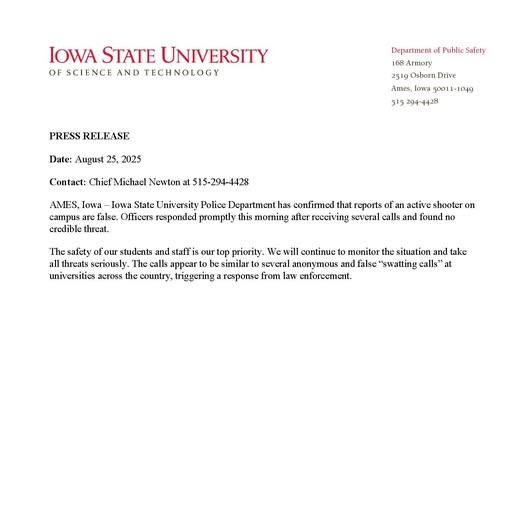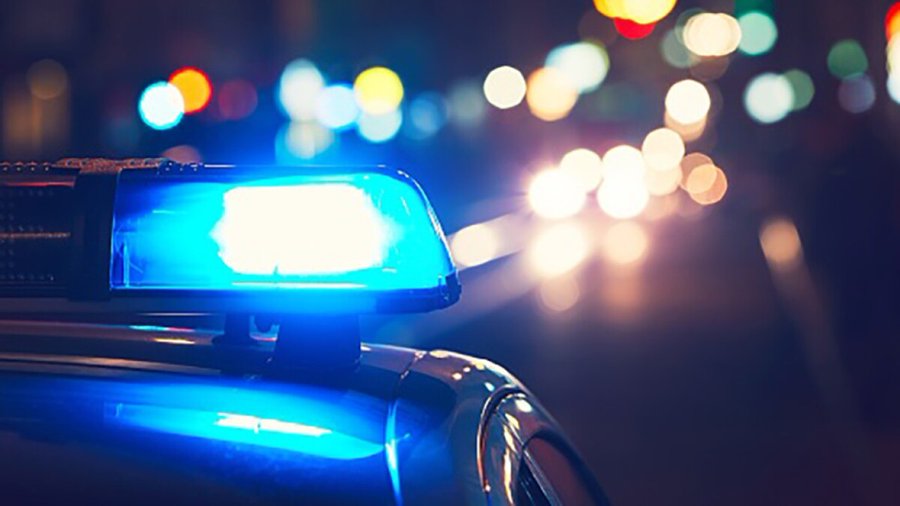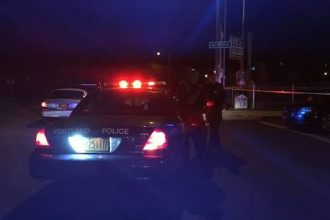In the heart of Ames, Iowa, a chilling wave of panic swept through Iowa State University on the morning of August 25, 2025, as reports of an active shooter sent the campus into high alert. The Iowa State University Police Department (ISUPD) sprang into action, responding swiftly to a series of alarming calls that echoed a terrifying scenario. But after a tense and thorough investigation, the university community breathed a collective sigh of relief: the reports were false, a cruel hoax designed to sow chaos.
The ISUPD, with its force of over 40 fully certified officers and dispatchers, descended on the sprawling campus at 2519 Osborn Drive, where the safety of students, faculty, and staff is an unyielding priority. The calls, which flooded in with unsettling urgency, prompted an immediate and robust response. Officers combed the grounds, from the iconic Armory to the bustling academic halls, ensuring no stone was left unturned. By mid-morning, their diligence paid off—there was no shooter, no weapons, no credible threat. The campus, alive with the energy of a new academic year, was safe.


Yet, the incident was no isolated prank. Authorities quickly identified the calls as part of a disturbing trend of “swatting”—a malicious tactic where false emergency reports, often of violent crimes like shootings, are made to provoke a massive law enforcement response. These hoaxes, designed to drain resources and incite fear, have plagued schools and universities nationwide. Just days earlier, Villanova University in Pennsylvania faced a similar scare, with two false active shooter reports targeting its campus in a single week. Iowa State’s incident bore the same hallmarks: anonymous calls, likely routed through internet protocols to mask their origins, aimed at creating confusion and terror.
The ISUPD’s response was a testament to their preparedness. Leveraging resources like the Iowa State Safe mobile app and their robust Clery Act protocols, which mandate timely warnings and transparent reporting, the department ensured clear communication with the campus community. “The safety of our students and staff is our top priority,” the ISUPD declared in a statement, reaffirming their commitment to vigilance. They vowed to continue monitoring the situation, treating every potential threat with the gravity it demands, even as they work to unravel the source of these deceptive calls.
This incident follows a troubling pattern in Iowa, where swatting has surged in recent years. In March 2023, over 30 Iowa school districts, including those in Des Moines, Boone, and Creston, were targeted by similar hoax calls, prompting lockdowns and widespread fear. The Iowa Department of Public Safety reported 75 swatting incidents in 2024 alone, nearly double the 39 cases from the previous year. In response, Iowa lawmakers took decisive action. Governor Kim Reynolds signed Senate File 2161 into law in 2024, elevating swatting from a misdemeanor to a Class D felony, punishable by up to five years in prison. If a swatting call results in serious injury or death, it becomes a Class C felony, carrying a potential 10-year sentence. This legislative muscle aims to deter bad actors, though challenges remain, as many swatting calls originate overseas, complicating prosecution.
As the dust settled on Iowa State’s campus, the university community reflected on the emotional toll of the scare. The false alarm disrupted the rhythm of a vibrant campus, where students were settling into classes and orientation activities. Parents, students, and faculty, still shaken by the specter of what could have been, found solace in the swift and effective response of law enforcement. The ISUPD’s transparency, bolstered by their activity dashboards and social media updates via @ISUPD, kept the community informed and grounded.
While no one was harmed, the incident underscored the profound impact of swatting. It’s more than a prank—it’s a calculated act that exploits fear, diverts critical resources, and leaves lasting trauma. As the FBI joins the investigation, alongside Iowa’s Division of Criminal Investigation, the hunt for the perpetrators continues. Cybersecurity experts, like Iowa State’s own Professor Doug Jacobson, note that the sheer volume of these calls may offer a silver lining: the more calls made, the greater the chance of tracing them back to their source.
For now, Iowa State University stands resilient, its commitment to safety unwavering. The campus, bathed in the late summer light, pulses with the promise of learning and discovery. But the shadow of swatting looms large, a reminder of the need for vigilance, accountability, and a united stand against those who seek to disrupt the sanctity of education. As the ISUPD continues its work, the message is clear: Iowa State will not be intimidated, and its community will not be broken.



